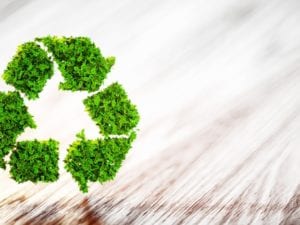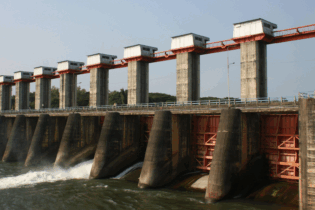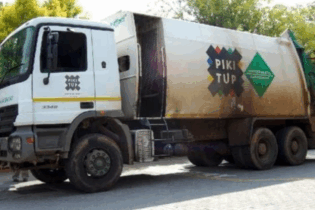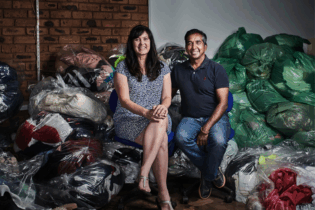All eyes are currently on Switzerland, where members of the 14th Conference of Parties to the Basel Convention (COP14) are considering a Norwegian proposal to add plastic to a list of wastes governed by the Convention that will see tighter restrictions on its transboundary movement.
South Africa, which recycles approximately 45% of its plastic waste – significantly higher than the global average – is among a number of countries supporting the motion. Should it succeed, it could spark a paradigm shift in how the world deals with its plastic waste. Operation National Sword In January 2018, China – having previously imported and recycled over half the world’s recyclable waste – enacted a ban (named ‘Operation National Sword’) on the import of most waste plastics, triggering a crisis of the world’s recycling economy. Countries that have historically relied on exporting their waste to Chinese processors – including the US and countries in the European Union – are scrambling to find alternative solutions for how they dispose of their waste. And while greater quantities of plastics are being landfilled and incinerated, most of this waste is now being exported to lower-income countries in Southeast Asia, many of which do not have adequate infrastructure to handle recyclables. Without adequate management, it is likely that this waste will continue to add to the plastic contamination of our ocean, already burdened by an estimated 150 million tonnes of plastic trash. This is among our most pressing environmental challenges, as our oceans produce 50% of our oxygen; absorb one third of all CO2 produced on Earth; and are relied on by over 3 billion people for their livelihoods. Rethinking plastics The real solution to this issue is in the circular economy, and this is why COP14 is so significant: tighter restrictions on how plastic waste is handled and processed internationally will place more pressure on countries to develop their own recycling infrastructure to process their own waste.“We need to seize this momentum to devise a sustainable solution to dealing with plastic waste that will minimise our ecological impact, now and in the future,” explains Chris Braybrooke from leading environmental services company Veolia Water Technologies.Doing so will require a complete reassessment of the lifecycle and economy of plastics.
“In order to be able to reuse our plastic, we need to shift away from strong, single-use plastics to polymers that biodegrade quickly or can be recycled,” Braybrooke says. “Recycling requires products designed to be recycled, and the variety of resins, additives and mixtures used in today’s plastics industry makes recycling more complicated.” Once manufacturers commit to an eco-design plastic, the priority shifts to ensuring recyclables can be processed with maximum efficiency and speed to ensure recycled plastic can be supplied more cost-effectively and thus has increased commercial viability. Behind some of the world’s most efficient and innovative plastic recycling plants are technologies and public-private partnerships delivered and managed by Veolia. #LivingCircular: a new life for plastic Since 2016, the Veolia Group has been operating three plastic recycling and recovery sites near Tokyo. In Honjō and Kikugawa, Veolia sorts LDPE, HDPE, PS and PP waste from the surrounding municipalities and converts it into plastic pellets. In Ibaraki, the Group uses these granules to make high quality extrusion compounds. They are blended with polymers in small percentages to create a compound that can be used as a raw material to manufacture new products in both the plastics industry and the automotive industry. These facilities produce a combined 45 000 tonnes of recycled plastic products. To improve the speed and efficiency of sorting plastic waste for recycling in Mantes-la-Ville, west of Paris, Veolia’s Research & Innovation department develops smart robotic solutions that provide a remote sorting mechanism that allow operators to sort plastic packaging waste remotely via a touch screen. “Incorporating robotics, digitisation, artificial intelligence and sensor fusion, Veolia is still looking to improve sorting quality and automation with innovative tools that are able to recognise, separate and prepare the different types of plastics,” Braybrooke explains. In Dagenham in the UK, Veolia’s recycling centre recycles 300 million HDPE bottles into new bottles every year. This cycle can be repeated up to ten times, meaning the amount of plastic produced for milk bottles could be reduced by 90%. “Having proven the technological and commercial viability of localised plastic recycling, Veolia is ready to help waste processors around the world develop their own circular economies, and move towards a world of reuse, recycling and zero waste,” Braybrooke concludes. In this way, the Group is helping cities and industries reduce pollution and limit global warming in order to minimise our ecological debt that will need to be addressed in the future.







